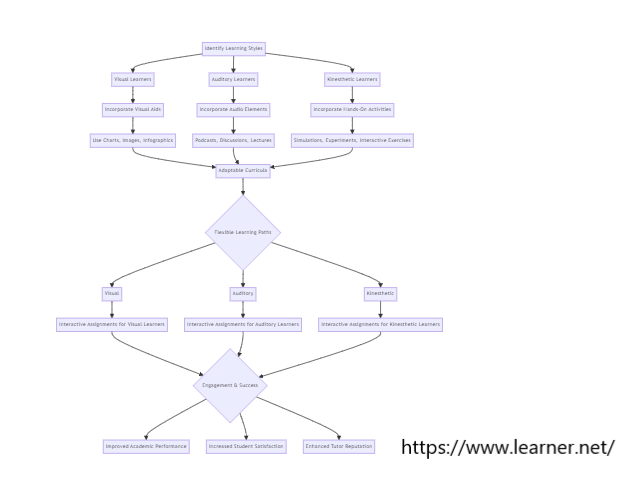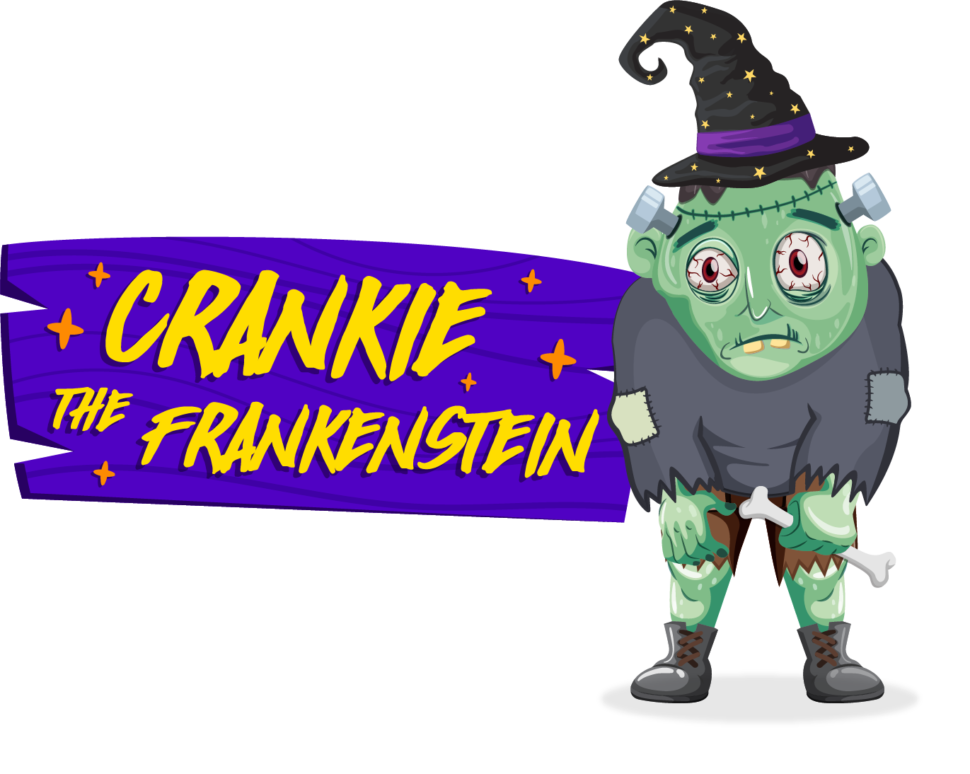Recognizing student archetypes is a crucial aspect of effective online tutoring, ensuring that each learner receives a tailored and quality education. Understanding diverse learning styles, such as Visual Learners, Auditory Learners, and Kinesthetic Learners, plays a pivotal role in creating an inclusive and engaging educational environment.
Visual Learners, characterized by a preference for visual aids and imagery, benefit from content presented through graphs, charts, and diagrams. Incorporating visually appealing materials and interactive multimedia can enhance their comprehension and retention.
Auditory Learners, on the other hand, thrive on verbal communication and auditory experiences. Tutors can optimize their teaching approach by integrating podcasts, discussions, and lectures, providing a rich auditory learning experience for these students.
Kinesthetic Learners engage best through hands-on activities and interactive experiences. Offering tactile learning opportunities, such as simulations, virtual labs, and interactive projects, caters to their need for physical engagement in the learning process.
Recognizing and addressing these diverse learning styles is essential for fostering an inclusive educational environment. Tutors should adopt flexible strategies that accommodate the preferences of student archetypes, generally recognized as Visual, Auditory, and Kinesthetic Learners. This approach ensures that every student has the opportunity to excel, regardless of their individual learning style, contributing to a more equitable and effective online education landscape.
Understanding Student Archetypes
Understanding student archetypes is an important consideration for international tutors conducting online sessions. Recognizing individual learning styles enables tutors to tailor their approach, ensuring a more effective and personalized educational experience.
In the increasingly popular realm of online education, where students often come from diverse cultural backgrounds, recognizing and adapting to various learning styles is crucial if the tutors are to be successful, not only in their work, but for the benefit of their students.
By more fully understanding these student archetypes, tutors can craft curricula that cater to each learning style. For visual learners, integrating multimedia elements into lessons can enhance comprehension. Offering audio resources and discussions suits the auditory learners, while hands-on activities and interactive exercises cater to the kinesthetic learners.
The significance of understanding student archetypes extends beyond adapting teaching methods. It promotes inclusivity and equity, acknowledging that each student has unique strengths and preferences. Tutors become adept at creating an environment where every student feels personally supported and engaged.
Moreover, recognizing student archetypes facilitates efficient time management. Tailoring materials to suit diverse learning styles minimizes the need for extensive revisions. Tutors can streamline their preparation process, allocating more time to addressing individual student needs during sessions.
In the context of international online tutoring, the cultural nuances associated with learning styles are equally crucial. Tutors must be attuned to the preferences and expectations of students from different regions. This cultural sensitivity fosters a more inclusive and respectful online learning community. This process can be greatly enhanced through the use of Localization and Globalization when planning lessons, and adapting them to the needs of individual students.
The adaptability inherent in understanding student archetypes aligns with the principles of effective online education. As the technological landscape evolves, tutors must embrace increasingly innovative methods to understand and cater to the diverse needs of their students. Recognizing archetypes and leveraging the rapidly evolving technologies accordingly ensures a more enriching learning experience better able to encourage the student to pursue their studies with added vigor.
Understanding student archetypes is not merely about categorizing learners but about recognizing the diversity of individual preferences and strengths. It empowers tutors to create a dynamic and inclusive online learning environment where each student can thrive. By tailoring materials and approaches to specific learning styles, international tutors contribute to a more personalized, effective, and culturally sensitive educational experience.
Understanding Visual Learners
Understanding Visual Learners is crucial for effective online tutoring. Visual learners, constituting a significant portion of the student population, have distinct characteristics and preferences that impact their learning experience. Utilizing statistical insights on visual learning efficacy and incorporating visual aids in curricula can enhance their educational journey.
Visual learners grasp information more effectively through visual stimuli such as images, charts, and graphs. According to a study by the National Research Council, incorporating visual elements into learning materials increases information retention by up to 65%. This highlights the importance of tailoring educational content to cater to the specific needs of visual learners.
Characteristics of visual learners include a preference for diagrams, charts, and infographics. They often benefit from color-coded information and find it easier to understand complex concepts when presented visually. Recognizing these traits is crucial for tutors aiming to create engaging and effective learning experiences.
In online tutoring environments, integrating multimedia elements becomes paramount. Research from the Journal of Educational Psychology indicates that visual learners show a significant improvement in comprehension when exposed to multimedia presentations. Tutors can leverage technologies such as interactive slideshows, educational videos, and virtual whiteboards to create a visually rich and dynamic learning environment.
Furthermore, statistics from a study by the American Psychological Association emphasize the positive correlation between visual learning strategies and academic performance. Visual learners tend to excel when educational materials align with their preferred learning style, resulting in improved retention and understanding of the subject matter.
To cater to visual learners more effectively, online tutors can implement the following strategies:
-
Visual Aids: Integrate visual aids like diagrams, charts, and mind maps into lesson plans.
-
Multimedia Presentations: Use multimedia elements such as videos and interactive presentations to convey information.
-
Color Coding: Organize information with color-coded cues to enhance understanding.
-
Interactive Platforms: Leverage online platforms that allow collaborative visual learning experiences.
Understanding the characteristics of visual learners and incorporating statistical insights into teaching methodologies can significantly enhance the effectiveness of online tutoring. By embracing visual aids and multimedia elements, tutors create a more engaging and tailored educational experience for their students.
Understanding Auditory Learners
Recognizing and understanding Audio learners is fundamental for online tutors aiming to create effective and engaging learning experiences. Audio learners, constituting a significant portion of the student population, have distinct traits and preferences that influence their educational journey. Incorporating audio elements, such as podcasts, lectures, and interactive discussions, is crucial for catering to their preferred learning style.
Traits of audio learners include a heightened sensitivity to sound and a preference for auditory stimuli when processing information. They often excel in understanding spoken instructions and benefit from discussions and verbal explanations. Recognizing these traits allows tutors to tailor their teaching methodologies to better suit the needs of audio learners.
According to a study by the Journal of Educational Psychology, incorporating audio elements in lesson planning enhances information retention for audio learners. The research suggests that students who learn through auditory channels show improved comprehension and recall when exposed to verbal explanations and discussions.
Podcasts, a popular medium for audio content, can be a valuable tool for tutors. Tutors can create educational podcasts that cover key concepts, provide additional insights, and offer supplemental materials. This aligns with the preferences of audio learners who thrive on spoken information.
Lectures, whether delivered live or recorded, offer another avenue for audio learners to absorb information. Tutors can structure lectures to include interactive discussions, allowing audio learners to engage with the material through verbal exchange. This facilitates a more dynamic and participatory learning experience.
Interactive discussions, facilitated through virtual platforms, enable audio learners to actively participate and learn through dialogue. These discussions can involve Q&A sessions, group discussions, or peer-to-peer interactions, providing auditory stimulation that resonates with the learning preferences of this group.
Understanding the traits and preferences of audio learners is crucial for online tutors. Incorporating audio elements into lesson planning, such as podcasts, lectures, and interactive discussions, caters to the specific needs of audio learners, enhancing their comprehension and overall learning experience.
Understanding Kinesthetic Learners
Understanding and catering to kinesthetic learners is essential for online tutors aiming to create dynamic and effective learning experiences. Kinesthetic learners, known for their preference for hands-on activities and interactive exercises, require specialized attention to ensure their educational needs are met in the virtual environment.
Identifying Kinesthetic Learning Traits:
Kinesthetic learners exhibit distinctive traits that set them apart in the realm of learning.
-
Physical Movement: Kinesthetic learners thrive on physical movement. They often prefer activities that involve bodily engagement, such as hands-on experiments, simulations, or interactive exercises.
-
Tactile Engagement: The sense of touch is crucial for kinesthetic learners. They benefit from tactile experiences, making activities that involve manipulation of objects or materials particularly effective for their understanding.
-
Preference for Action: These learners often demonstrate a preference for action-oriented tasks. They comprehend information more effectively when engaged in activities that require movement or practical application.
Importance of Hands-on Activities:
Incorporating hands-on activities is important for engaging kinesthetic learners and fostering an effective online learning environment.
-
Enhanced Learning Retention: Hands-on activities significantly enhance learning retention for kinesthetic learners. Tutors can design activities that allow students to physically interact with the subject matter, contributing to better understanding and memory retention.
-
Active Participation: Kinesthetic learners thrive when actively participating in the learning process. Tutors should encourage interactive exercises, virtual labs, or simulations that promote hands-on engagement, ensuring these learners remain actively involved.
-
Real-world Application: Integrating experiential learning in online settings provides kinesthetic learners with opportunities to apply theoretical knowledge to real-world scenarios. This application-oriented approach enhances their comprehension and practical skills.
Implementing Experiential Learning Online:
Bringing experiential learning into the virtual realm requires strategic planning and utilization of digital tools.
-
Virtual Simulations: Tutors can leverage virtual simulations and interactive platforms to create simulated hands-on experiences. These digital tools enable kinesthetic learners to engage with content in a dynamic and immersive manner.
-
Interactive Exercises: Designing interactive exercises that require physical interaction with the computer or digital devices can effectively cater to kinesthetic learners. This could include virtual experiments, interactive quizzes, or problem-solving activities.
-
Utilizing Technology: Virtual reality (VR) and augmented reality (AR) technologies offer innovative ways to simulate hands-on experiences. Tutors can explore these technologies to provide kinesthetic learners with immersive learning opportunities.
Understanding kinesthetic learners and implementing hands-on activities and interactive exercises are great ways for online tutors to tailor lessons to their personal needs. By recognizing and catering to the unique traits of kinesthetic learners, tutors can create a more inclusive and effective online learning environment, ensuring that all students, regardless of their learning style, have the opportunity to excel.
Diagram 1: Tailoring Online Curricula to Diverse Learning Styles

Tailoring Curricula to Learning Styles
Creating versatile curricula that cater to diverse learning styles is crucial for the sustained success of online tutors and teachers in today’s competitive digital education landscape. Recognizing the distinct needs of visual, auditory, and kinesthetic learners and integrating these considerations into curriculum design can enhance the effectiveness of online teaching.
Understanding student archetypes is foundational to this approach. In creating adaptable curricula, a multimodal approach is essential. Develop curricula that include a mix of visual, auditory, and kinesthetic elements. Provide written content accompanied by images, incorporate audio explanations, and include interactive exercises. This approach ensures accessibility for all student archetypes. Moreover, flexible learning paths should be incorporated, allowing students to choose activities that align with their preferred style while still engaging with other formats.
Interactive assignments further contribute to engagement especially in peer group settings which may serve to foster a sense of community among the students. For visual learners, this could involve creating infographics or presentations. Auditory learners might participate in virtual discussions or record audio responses. Kinesthetic learners could engage in hands-on projects or simulations.
Leveraging technology is also vital. Virtual Reality (VR) and Augmented Reality (AR) can create immersive experiences, particularly beneficial for kinesthetic learners. Adaptive learning platforms, utilizing algorithms to personalize content based on individual learning styles, are also valuable tools. While there are many additional learning materials online, the creation of these materials by the individual online tutors ensures that the content matches their curricula more exactly.
In the long term, the positive outcomes resulting from adaptable curricula contribute to student retention and positive word-of-mouth referrals. Improved engagement and understanding foster better academic performance and student satisfaction. In the competitive landscape of online teaching, tutors and teachers with adaptable curricula gain a strategic edge that can additionally serve to increase their potential income. Meeting the needs of a diverse student body enhances reputation and attracts a broader audience. Ultimately, effective curricula contribute to student success, retention, and the overall success of online tutors in the dynamic world of digital education.
Strategies for Effective Online Tutoring
Effective online tutoring is contingent upon the implementation of strategic approaches that cater to diverse student needs. One pivotal element is the individualized assessment of student learning styles. Recognizing that students have unique preferences and aptitudes, tutors can employ various assessment tools to identify whether a student is a visual, auditory, or kinesthetic learner. This insight serves as a foundational aspect for tailoring instructional methods.
Creating adaptable curricula is another key strategy. A one-size-fits-all approach is no longer viable in the digital education landscape. Tutors need to develop curricula that integrate a variety of modalities to accommodate the distinct learning styles of each archetype. Visual learners benefit from graphic-rich content, auditory learners thrive on discussions and lectures, and kinesthetic learners require hands-on activities. By incorporating a mix of visual, auditory, and kinesthetic elements, tutors can ensure that their curricula are accessible and engaging for all.
The integration of technologically advanced tools, such as AI Assistants, is a game-changer in personalized support. AI assistants can analyze individual learning patterns, provide real-time feedback, and offer targeted resources to address specific needs. These tools contribute to a more dynamic and interactive learning experience, fostering student engagement and comprehension. By leveraging AI, tutors can tailor their approach to the requirements of each student archetype, enhancing the overall effectiveness of online tutoring.
Additionally, the wealth of online educational resources plays a pivotal role in crafting customized lesson plans. Tutors can seamlessly integrate supplementary materials from reputable sources, offering students a diverse range of content that aligns with their preferred learning styles. Whether it’s interactive simulations, video lectures, or virtual labs, the abundance of online resources allows tutors to enhance the richness of their lessons and provide students with a more comprehensive understanding of the subject matter.
Effective online tutoring requires a multifaceted approach that encompasses individualized assessment, adaptable curricula, and the integration of advanced technological tools. By understanding and catering to the distinct needs of visual, auditory, and kinesthetic learners, tutors can create a learning environment that promotes engagement, understanding, and success.
Embracing the capabilities of AI Assistants and harnessing the vast array of online educational resources further elevates the quality of online tutoring, ensuring a dynamic and enriching experience for students across diverse archetypes.








There are no reviews yet.